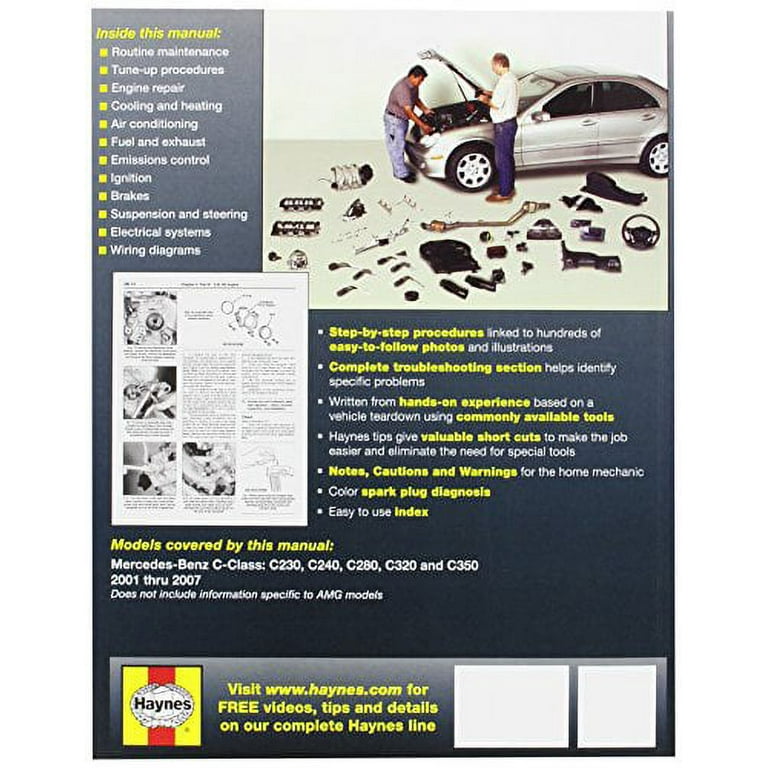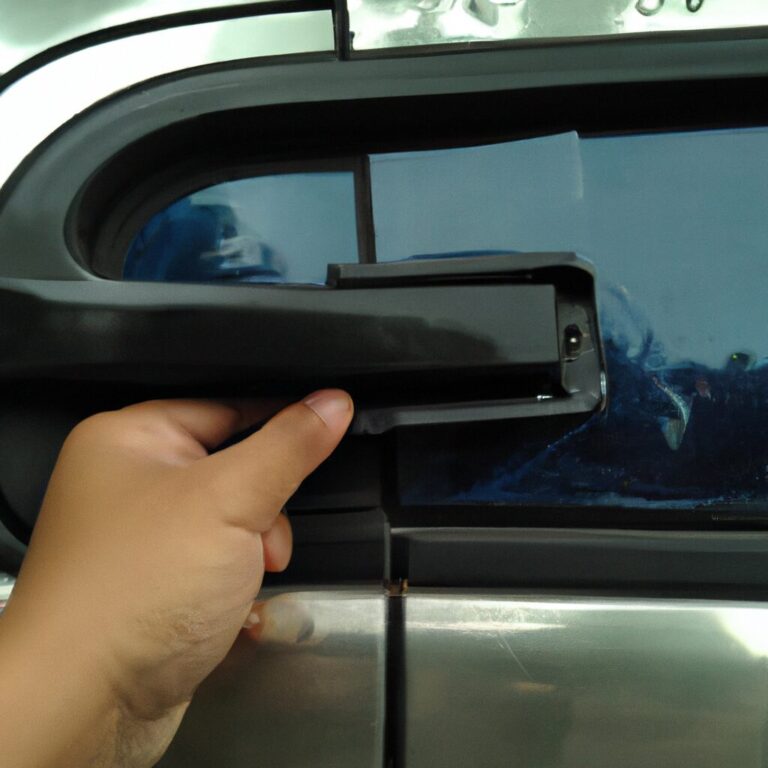Quick Tips for Identifying Suspension Issues With Car Diagnostics
Quick Tips for Identifying Suspension Issues With Car Diagnostics: Look for uneven tire wear and listen for unusual noises or rattling when driving over bumps. These can indicate potential suspension problems.
If you notice these signs, it’s essential to consult with a qualified mechanic for further inspection and accurate diagnosis. A well-maintained suspension system is crucial for a smooth and safe driving experience. However, identifying potential issues with your car’s suspension can be challenging, especially for someone without technical expertise.
By learning a few quick tips for diagnosing suspension issues through car diagnostics, you can stay ahead of potential problems and ensure your vehicle’s optimal performance. We will explore some practical tips to help you identify and address suspension issues promptly, thereby enhancing your driving safety and overall experience.

Credit: www.ebay.com
Importance Of Identifying Suspension Issues
Identifying suspension issues promptly through car diagnostics is crucial for maintaining vehicle safety and performance. By closely monitoring for common signs like uneven tire wear or unusual noises, drivers can address problems early on and prevent potentially hazardous situations on the road.
Regular suspension checks are essential for a smooth and safe driving experience.
The importance of identifying suspension issues cannot be understated, as it plays a critical role in ensuring vehicle safety and preventing further damage. By promptly diagnosing and addressing suspension problems, you can protect yourself, your passengers, and other road users from potential accidents or mishaps.Ensuring Vehicle Safety
Maintaining the safety of your vehicle is of utmost importance, and the suspension system is a key component that contributes to this. The suspension is responsible for supporting the weight of the vehicle, absorbing shocks from the road, and providing stability and control during driving. If there are any problems with the suspension, such as worn-out components or misalignments, it can compromise the handling and maneuverability of the vehicle. Identifying suspension issues early on allows you to address them promptly, ensuring that your vehicle remains safe to drive. A faulty suspension system can affect various aspects of your vehicle’s performance, including steering responsiveness, braking, and overall stability. By identifying these issues early, you can prevent potential accidents and keep yourself and your passengers safe on the road.Preventing Further Damage
Aside from safety concerns, timely suspension diagnostics also prevent further damage to your vehicle. Suspension issues, if left unaddressed, can put additional stress on other components, leading to more extensive and expensive repairs down the line. For example, a worn-out shock absorber can cause excessive vibrations and jolts, which can impact other parts of the vehicle, such as the tires, wheel bearings, and even the chassis. By identifying and fixing suspension problems early on, you can prevent these issues from causing further damage to your vehicle and save yourself from costly repairs and replacements in the future. Taking care of suspension issues promptly also helps maintain the overall performance and longevity of your vehicle. By ensuring that your suspension system is in optimal condition, you can enjoy a smoother and more comfortable ride, improved fuel efficiency, and increased lifespan of other vehicle components. In conclusion, the importance of identifying suspension issues cannot be overlooked. By promptly diagnosing and addressing suspension problems, you ensure vehicle safety, prevent further damage, and maintain the overall performance and longevity of your vehicle. Regular suspension maintenance and proactive diagnostics should be part of every car owner’s routine to ensure a safe and hassle-free driving experience.
Credit: m.facebook.com
Signs Of Suspension Problems
Suspension issues can lead to dangerous driving conditions and cause damage to your vehicle if left unchecked. By identifying signs of suspension problems early on, you can prevent further damage and ensure a smoother, safer ride.
Uneven Tire Wear
Uneven tire wear is a common sign of suspension issues. Inspect your tires for uneven tread wear, which can indicate that the suspension components are not functioning properly. Look for bald spots, excessive wear on one side of the tire, or a scalloped pattern, as these are all red flags that your suspension may be in need of attention.
Excessive Bouncing
Excessive bouncing while driving can be a clear indicator of suspension problems. If your vehicle bounces excessively over bumps or dips, or you notice a lingering bouncing motion after hitting a bump, it’s likely that your shocks or struts are worn out or damaged. This not only affects the comfort of your ride but also poses a safety risk on the road.
Pulling To One Side
Pulling to one side while driving indicates that your suspension system may be out of alignment or that there is an issue with the steering components. While uneven tire pressure or worn-out brakes can also cause this problem, it’s important to have your suspension thoroughly inspected to rule out any potential issues that could lead to more serious problems in the future.
Using Car Diagnostics For Identifying Suspension Issues
When it comes to maintaining your car, identifying potential suspension issues is crucial for both safety and vehicle performance. Car diagnostics can play a pivotal role in pinpointing these concerns before they escalate into more severe problems. By utilizing the right tools and techniques, you can detect suspension issues early and take the necessary steps to address them.
Diagnostic Tools
Modern cars are equipped with advanced diagnostic tools that can be accessed through the OBD-II port. These tools, such as OBD-II scanners, are essential for retrieving valuable data related to the vehicle’s suspension system. Additionally, specialized suspension diagnostic tools, often available at automotive repair shops, can provide detailed insights into the condition of various suspension components.
Scanning For Error Codes
When using car diagnostics to identify suspension issues, scanning for error codes is a fundamental step. Error codes related to the suspension, such as those indicating problems with the shock absorbers or struts, can be indicative of underlying issues. A thorough scan using a diagnostic tool can reveal these codes, allowing for targeted troubleshooting and repair.

Credit: www.walmart.com
Diy Suspension Testing Tips
Identify car suspension issues quickly with these DIY testing tips. Learn how to use car diagnostics effectively to spot and resolve suspension problems.
If you’ve noticed your car bouncing excessively or experiencing a rough ride, it’s possible that there may be suspension issues at play. While professional diagnostics are always recommended, there are some basic tests you can perform yourself to get a sense of what might be going on. In this section, we’ll explore some DIY suspension testing tips that can help you identify common problems before taking your car to a mechanic. Let’s dive in!
Checking Shock Absorbers
Shock absorbers play a crucial role in maintaining ride comfort and handling. Over time, they can wear out, resulting in a deteriorated suspension system. Here’s a simple DIY test to check your shock absorbers:
- Ensure your car is on a level surface and parked securely.
- Apply weight to one corner of the car by pressing down on it and then release it.
- Observe the car’s behavior: if it continues to bounce more than two or three times, it may be a sign of worn shock absorbers.
If you suspect your shock absorbers need replacing, it’s best to consult with a professional technician for further inspection and a proper diagnosis.
Inspecting Ball Joints
Ball joints connect the control arms to the steering knuckles, allowing for smooth movement and flexibility. Over time, they can become loose or worn, leading to poor suspension performance. To inspect your ball joints:
- Visually inspect the ball joints for any signs of damage, excessive dust, or rust.
- Place a floor jack under the lower control arm and gently lift it until the wheel is off the ground.
- Use a pry bar to apply subtle pressure between the control arm and the steering knuckle.
- Check for any excessive movement or play in the ball joint.
If you notice any signs of wearing or looseness, it’s important to have your ball joints inspected and possibly replaced by a qualified mechanic.
Seeking Professional Help
Identifying suspension issues in car diagnostics can be challenging. Seek professional help to quickly diagnose and repair any potential problems. Trusting a trained mechanic ensures a safe and smooth driving experience.
When To Consult A Mechanic
Noticing persistent issues or warning lights needs immediate attention from a professional mechanic.
Importance Of Timely Repairs
Addressing suspension problems promptly can prevent further damage and ensure road safety.
Frequently Asked Questions Of Quick Tips For Identifying Suspension Issues With Car Diagnostics
What Are The 5 Steps To Diagnose Problems With Suspension System?
Diagnosing suspension problems involves: 1) Checking for uneven tire wear, 2) Inspecting shocks and struts for leaks or damage, 3) Listening for unusual noises while driving, 4) testing the vehicle’s bounce, 5) examining the suspension system for any visible damage.
How Do You Test For Bad Suspension?
To test for bad suspension, look for signs like excessive bouncing or drifting while driving, uneven tire wear, and a bumpy or unstable ride. You can also perform a visual inspection for damaged or worn-out suspension components. Additionally, listen for any unusual noises while driving over bumps.
How Do I Know If My Car Has Suspension Problems?
You can detect car suspension problems by feeling for unusual vibrations, bouncing, or rocking while driving. Listen for clunking or squeaking sounds when going over bumps and check for uneven tire wear. A professional inspection can confirm any issues.
How You Would Check The Condition Of The Suspension On This Vehicle?
Inspect the suspension by checking for worn-out or damaged parts. Look for leaks, listen for unusual noises, and test drive for abnormal handling.
Conclusion
It is important to regularly perform car diagnostics to effectively identify suspension issues. By paying attention to warning signs such as uneven tire wear, knocking or bouncing noises, and difficulty steering, drivers can take proactive measures to address suspension problems.
Remember, a well-maintained suspension system contributes to a smooth ride, improved vehicle safety, and extended lifespan. Stay diligent and seek professional help whenever necessary to keep your car in optimal condition.


